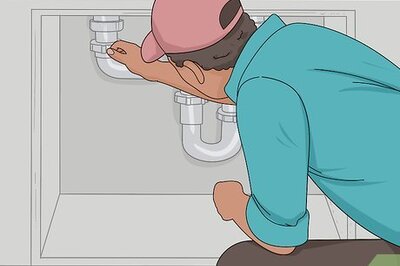
views
"The newspapers say inflation is falling, but I don’t see prices coming down anywhere," says a concerned voice in the suburban train in Mumbai. It’s a common misconception that falling inflation means falling prices. That's not however how things work.
Principal economist at CRISIL, D K Joshi, explains, "Falling inflation rates doesn’t mean falling of prices, it only implies the rate at which the prices of goods are growing is low."
Inflation rate has fallen to 2.43 per cent, the lowest in seven years, after breaching the 12 per cent mark in August ‘08. That means, at present, the prices of goods are higher than 2.43 per cent than last year.
An example will make it clearer. Let’s say, the price of an item is Rs 100. It increases to Rs 106 with inflation at 6 per cent. Now, if inflation has slipped to 2.43 per cent, the price of the same good will move to Rs 108.57 from Rs 106, that is, 2.43 per cent higher than Rs 106.
So simply put, inflation is a general rise in the prices of goods and services. When inflation rises, the prices of the goods rises. When inflation reaches zero, the prices on goods will become stagnant. And when inflation turns negative, you will see the actual fall in prices.
By when is it likely to happen?
"We can expect to see inflation close to zero by March-end and by May-June in negative. It is when we will see actual fall in prices of goods," says Joshi.
Disclaimer: While we have made efforts to ensure the accuracy of our content (consisting of articles and information), neither this website nor the author shall be held responsible for any losses/ incidents suffered by people accessing, using or is supplied with the content.




















Comments
0 comment